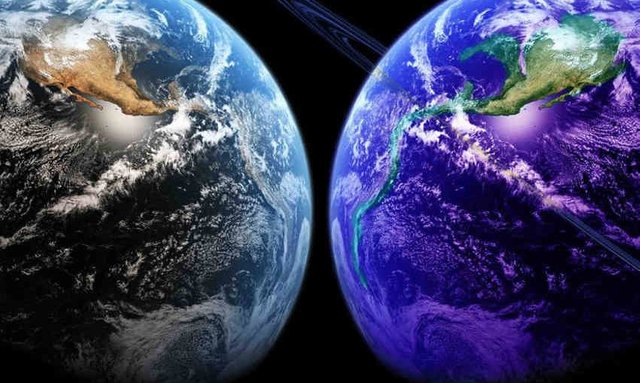Parallel Universe! Do Parallel Universes Exit?
Parallel Universe
.jpg)
A parallel universe is a hypothetical self-contained reality co-existing with one's own. A specific group of parallel universes are called a "multiverse", although this term can also be used to describe the possible parallel universes that constitute reality.
While the terms "parallel universe" and "alternative reality" are generally synonymous and can be used interchangeably in most cases, there is sometimes an additional connotation implied with the term "alternative reality" that implies that the reality is a variant of our own.
The term "parallel universe" is more general, without any connotations implying a relationship, or lack of relationship, with our own universe.
A universe where the very laws of nature are different – for example, one in which there are no Laws of Motion – would in general count as a parallel universe but not an alternative reality and a concept between both fantasy world and earth.
.jpg)
Arguing for a multiverse
Around 13.7 billion years ago, simply speaking, everything we know of in the cosmos was an infinitesimal singularity. Then, according to the Big Bang theory, some unknown trigger caused it to expand and inflate in three-dimensional space. As the immense energy of this initial expansion cooled, light began to shine through. Eventually, the small particles began to form into the larger pieces of matter we know today, such as galaxies, stars and planets.
"HERE IF 5 ARTICALS WHY MULTIUNIVERS IS POSSIBLE"
.jpg)
- Infinite universes. We don't know what the shape of space-time is exactly. One prominent theory is that it is flat and goes on forever. This would present the possibility of many universes being out there. But with that topic in mind, it's possible that universes can start repeating themselves. That's because particles can only be put together in so many ways. More about that in a moment.
.jpg)
- Bubble universes. Another theory for multiple universes comes from "eternal inflation." Based on research from Tufts University cosmologist Alexander Vilenkin, when looking at space-time as a whole, some areas of space stop inflating like the Big Bang inflated our own universe. Others, however, will keep getting larger. So if we picture our own universe as a bubble, it is sitting in a network of bubble universes of space. What's interesting about this theory is the other universes could have very different laws of physics than our own, since they are not linked.
.jpg)
- Daughter universes. Or perhaps multiple universes can follow the theory of quantum mechanics (how subatomic particles behave), as part of the "daughter universe" theory. If you follow the laws of probability, it suggests that for every outcome that could come from one of your decisions, there would be a range of universes — each of which saw one outcome come to be. So in one universe, you took that job to China. In another, perhaps you were on your way and your plane landed somewhere different, and you decided to stay. And so on.
.jpg)
- Mathematical universes. Another possible avenue is exploring mathematical universes, which, simply put, explain that the structure of mathematics may change depending in which universe you reside. "A mathematical structure is something that you can describe in a way that's completely independent of human baggage," said theory-proposer Max Tegmark of the Massachusetts Institute of Technology, as quoted in the 2012 article. "I really believe that there is this universe out there that can exist independently of me that would continue to exist even if there were no humans."
.jpg)
- Parallel universes. And last but not least as the idea of parallel universes. Going back to the idea that space-time is flat, the number of possible particle configurations in multiple universes would be limited to 10^10^122 distinct possibilities, to be exact. So, with an infinite number of cosmic patches, the particle arrangements within them must repeat — infinitely many times over. This means there are infinitely many "parallel universes": cosmic patches exactly the same as ours (containing someone exactly like you), as well as patches that differ by just one particle's position, patches that differ by two particles' positions, and so on down to patches that are totally different from ours.

Famously, physicist's Stephen Hawking's last paper before his death also dealt with the multiverse. The paper was published in May 2018, just a few months after Hawking's demise. About the theory, he told Cambridge University in an interview published in The Washington Post, "We are not down to a single, unique universe, but our findings imply a significant reduction of the multiverse to a much smaller range of possible universes."
.jpg)
Congratulations @pkanakhara! You have completed the following achievement on Steemit and have been rewarded with new badge(s) :
Click on the badge to view your Board of Honor.
If you no longer want to receive notifications, reply to this comment with the word
STOPDo not miss the last post from @steemitboard:
SteemitBoard World Cup Contest - Final results coming soon
Congratulations @pkanakhara! You received a personal award!
You can view your badges on your Steem Board and compare to others on the Steem Ranking
Do not miss the last post from @steemitboard:
Vote for @Steemitboard as a witness to get one more award and increased upvotes!